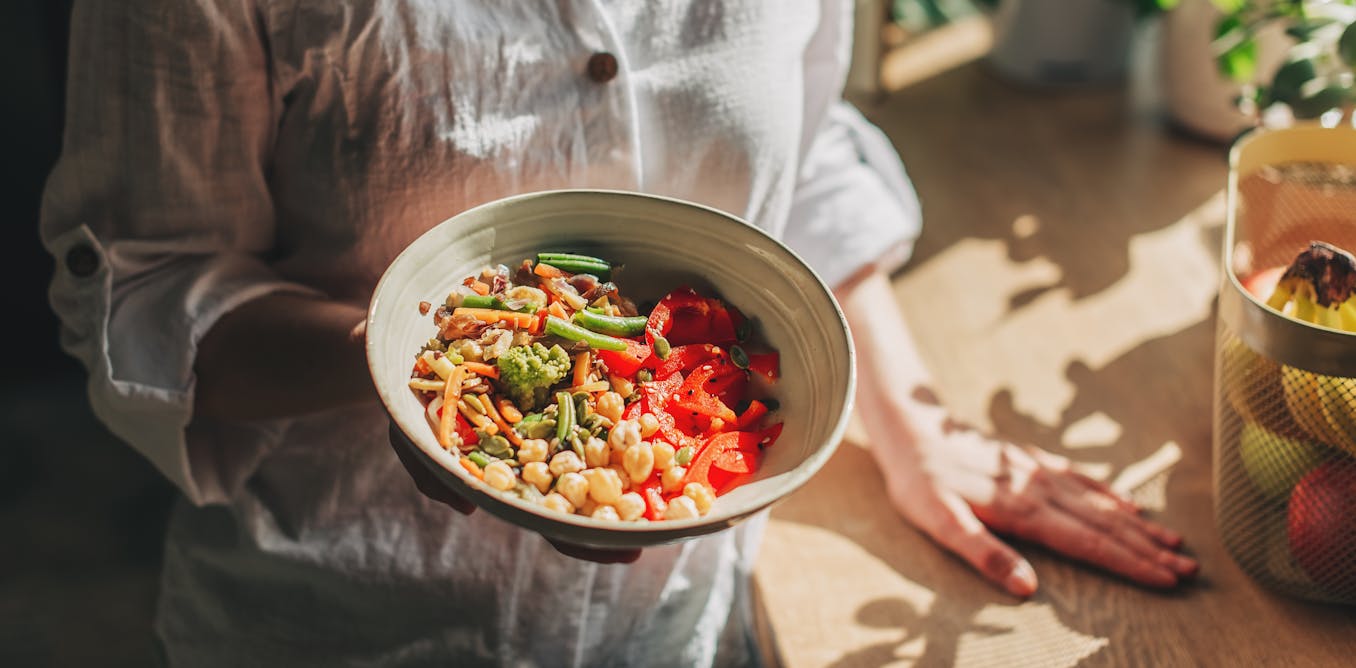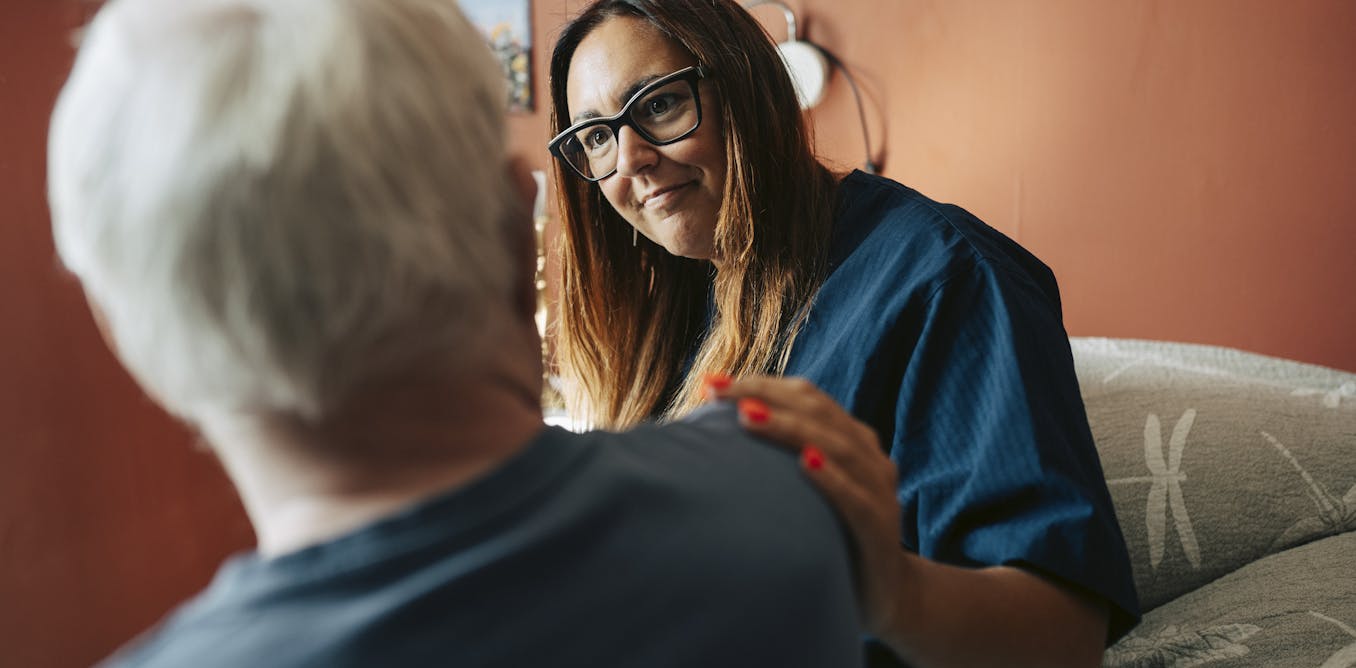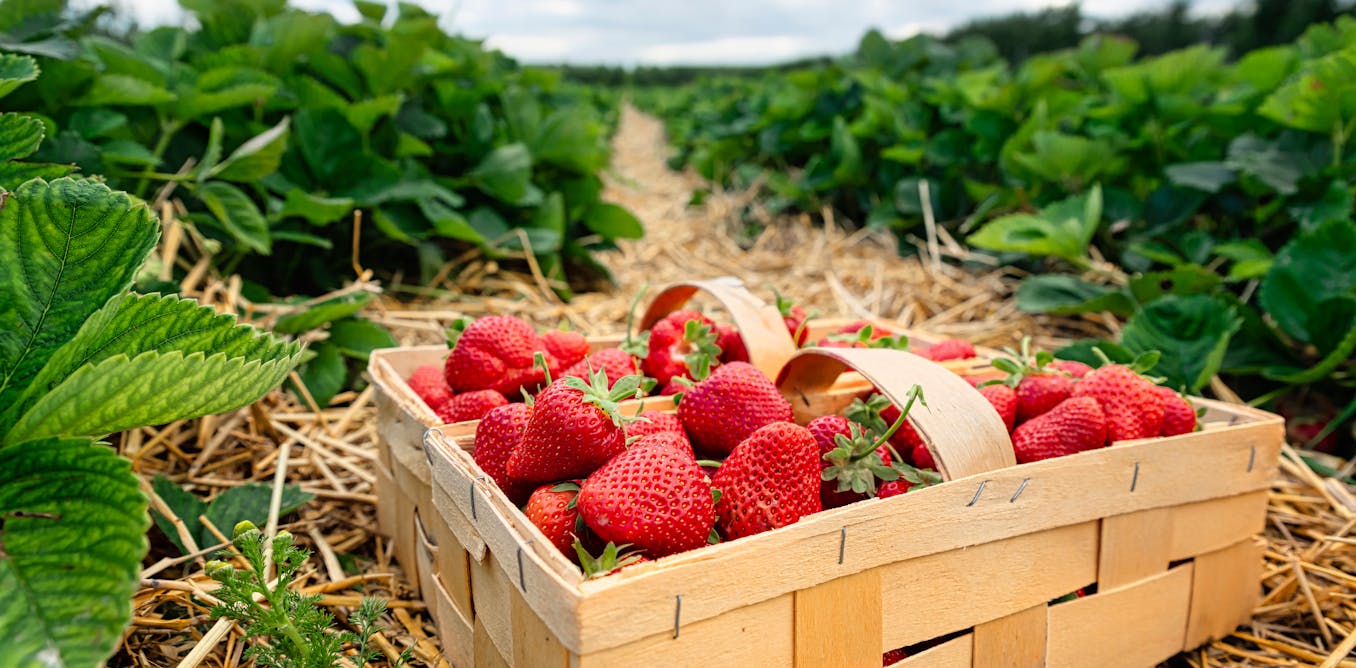Endometriosis affects around 10% of women of reproductive age. It’s a chronic inflammatory condition that occurs when tissue similar to the lining of the uterus (the endometrium) grows outside the uterus.
Endometriosis can cause chronic pain, bloating, bowel and bladder dysfunction, pain during sex and infertility. These symptoms can lead to reduced quality of life and mental health challenges.
Although endometriosis pain can be treated with medication or surgery, these options are not suitable for everyone, and a significant number of women experience recurrent symptoms even after surgery.
Many women with endometriosis look to complementary therapies to manage their symptoms, which can include dietary changes and taking supplements.
A recent study sought to understand different dietary strategies women with endometriosis use and how these affect their pain levels. The researchers found cutting down on things like dairy, gluten, caffeine and alcohol could improve endometriosis pain.
Let’s take a closer look.
What the researchers did and found
The study, which was led by researchers from the University of Edinburgh, involved an online survey. It asked women with endometriosis questions about any dietary changes they made and any supplements they used, and whether they found these useful for managing pain.
A total of 2,388 women with a confirmed diagnosis of endometriosis completed the survey. Some 84% of respondents had made at least one dietary change, 67% of whom reported these changes improved their pain. Meanwhile, 59% had used supplements, 43% of whom considered these changes improved their pain.
The following are some of the most popular dietary changes women had tried, and how they thought these changes affected their pain:
-
drinking less alcohol (improved pain in 53% of women)
-
eating less gluten (45%)
-
consuming less dairy (45%)
-
consuming less caffeine (43%)
-
eating less processed sugar, which can be found in foods and drinks such as lollies, cakes, biscuits and soft drinks (41%)
-
eating less processed foods, which include deli meats, savoury snacks such as chips and sausage rolls, and chocolate (38%)
-
following a low FODMAP diet, which involves avoiding short-chain carbohydrates (certain types of sugars) to reduce gas, bloating, pain and discomfort (32%)
-
adopting a Mediterranean diet, which is a diet high in plant foods (including fruit and green leafy vegetables), extra virgin olive oil, breads, fish, fermented dairy, and cereals and low in red meat, and processed meats and foods (29%).
For supplements:
Drazen Zigic/Shutterstock
Some limitations
There are some weaknesses in this study to consider when interpreting the results. First, it’s an observational study, which means we cannot say these dietary changes and supplements cause decreased pain, just that there appears to be an link.
To be more confident about the effects of dietary changes or supplements, we would need to do randomised studies with control groups.
Also, the participants self-reported dietary changes they had made in the past and past pain levels. This relies on memory, which can be unreliable.
All that said, this sort of research does provide us with clues about what may work, especially when we combine it with our knowledge of the actions these foods and supplements have in the body.
So how would they work?
Given the inflammatory component in endometriosis, the findings of this study are not entirely surprising. Many of the dietary changes and supplements this study looked at have anti-inflammtory properties.
For example, reducing alcohol consumption, reducing processed foods, adopting a Mediterranean diet and using turmeric or curcumin may reduce inflammation.

PeopleImages.com – Yuri A/Shutterstock
Some of the findings of this study seem to align with other evidence, while others don’t.
For example, a recent review showed the Mediterranean diet can lead to reductions in pain, however the relevant studies did not have control groups. This same review showed a low FODMAP diet reduced pain and improved quality of life in people with endometriosis.
Meanwhile, a 2024 paper concluded there’s a lack of evidence to support a gluten-free diet for endometriosis symptoms. The authors argued avoiding gluten to manage the condition should be discouraged.
Peppermint has been reported to reduce period pain and nausea. But I couldn’t find any specific evidence for endometriosis.
So what should you do?
If you have endometriosis, this study and existing evidence suggests following a Mediterranean diet or a low FODMAP diet may reduce pain. This current study also indicates reducing your intake of alcohol, sugar and processed foods may help.
Importantly, these changes won’t do any harm to your overall health. In fact, the Australian dietary guidelines recommend drinking alcohol and consuming processed foods in moderation, given links to a range of chronic diseases. So these changes may have other benefits too.
However, some of the dietary changes reported in this study may be problematic.
For example, eliminating dairy will significantly reduce your calcium intake which is important for building healthy bones and reducing the risk of osteoporosis in later life. However, there are other ways of ensuring an adequate intake of the nutrients found in dairy products.
Reducing caffeine won’t lead to any health or nutritional concerns, but may affect quality of life for people who enjoy drinking coffee or tea.
Women with endometriosis can try supplements such as turmeric or curcumin and ginger, but it’s best to try them one at a time, so you can identify which one works for you.
If you’re looking to change your diet to try to manage endometriosis symptoms, it may be best to see a registered or accredited practising dietitian to ensure you’re following a nutritionally balanced diet.

The post “Could changing your diet improve endometriosis pain? A recent study suggests it’s possible” by Evangeline Mantzioris, Program Director of Nutrition and Food Sciences, Accredited Practising Dietitian, University of South Australia was published on 04/11/2025 by theconversation.com




































Leave a Reply